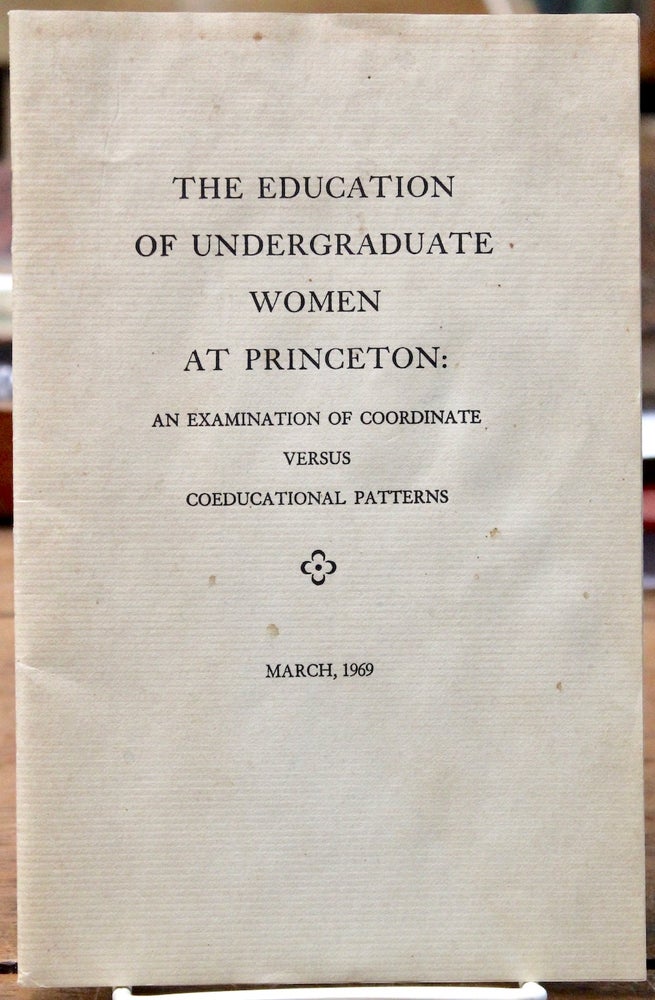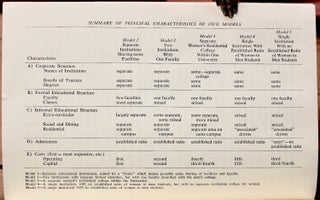The Education of Undergraduate Women at Princeton: An Examination of Coordinate Versus Coeducational Patterns.
[Princeton, New Jersey: Princeton University,], March 1969. With a full-page table comparing educational models. Fading and light foxing to front cover. Very bright and clean throughout. A very good copy of an uncommon item reporting the results of a study on how Princeton University could implement their decision to admit women. Pale bule printed paper wrappers. Octavo. 24 pp. Item #16973
A committee of Princeton students, faculty, and administrators considered five models for incorporating women into the college: (1) “Separate educational institutions, joined by a ‘treaty’ which makes possible some sharing of facilities and faculty”; (2) “Two institutions with separate formal identities, but with one faculty identified with the men’s college”; (3) “A separate women’s residential college (or zone) within the University”; (4) “A single institution, with an established ratio of women to men students, but with no separate residential college”; and (5) “A single institution with no established ratio of women to men students.” The present item summarizes the characteristics, advantages, and disadvantages of the five models. Princeton began admitting undergraduate women in the fall of 1969 under the fourth proposed model. The model allowed women to choose between living on campus in designated spaces (women-only dorms or women’s sections in larger dorms) or living off campus and between eating and socializing in communal spaces with men or in their own dorms and private residences. The text reads: “This model avoids any connotations of ‘segregation’ and thus is attractive on grounds of principle to those who believe it is important that men and women students learn how to know each other simply as ‘people,’” (p. 9).
Other advantages listed include the benefits of co-ed classrooms and mixed-gender lectures, clubs, and social events: “intellectual as well as social interchange…is a primary objective of having women students at Princeton,” (p. 10). Students would also become more equipped for a mixed-gender workplace as more women entered careers previously dominated by men. OCLC records ten physical copies, only eight of which are located in the United States. Only.
Price: $125.00





